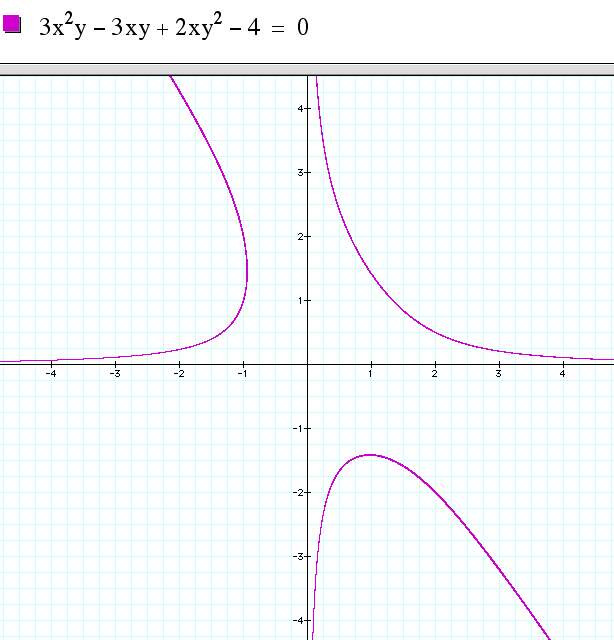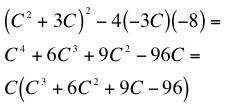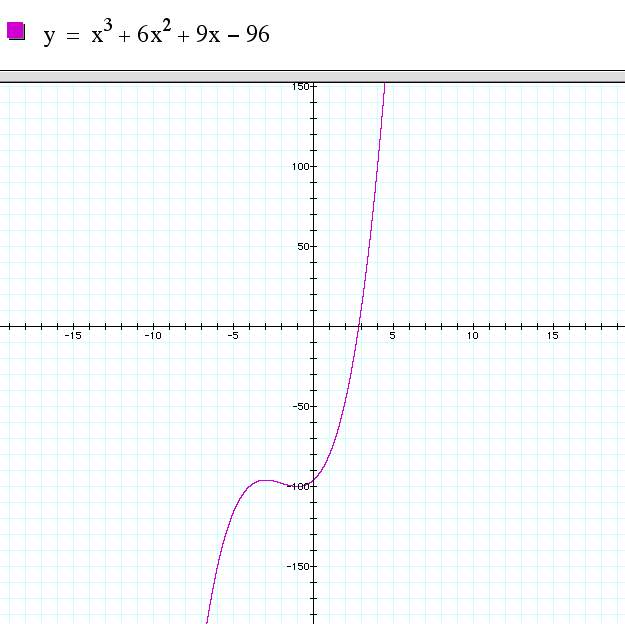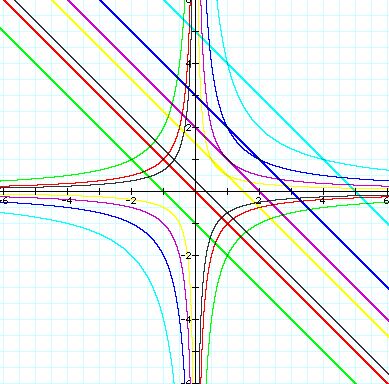

Objective: Find as many solutions as possible for A, B, and C that satisfy the equations
First, I know that there are some restrictions on the values of the variables. For example, all of the variables must be non-zero since their product is 4. Furthermore, the variables have to all be positive, or exactly two negative because their product is positive.
At first I began by solving for C in the first equation and substituting the expression into the second equation. I then used graphing calculator with A = x and B = y. The resulting graph gave me a set of (A,B) pairs for solutions from which I could determine the C values.

However, because of my initial observation that exactly two of the variables could be negative at any one time, C C values corresponding to the AB pairs in the 1st quadrant will be positive. Furthermore, C values corresponding to the AB pairs in the 2nd or 4th quadrants will be negative.
So now I would like to fix C and find the corresponding AB pairs. Assume A = x and B = y.


Since this is a quadratic equation, I can now determine when there will be 1 solution, two solutions, or no solutions depending on the value of the determinant.

When the determinant is zero, there is one AB pair that corresponds to the C value found. Since we know that C cannot be zero, we look for zeros of the cubic function above. Using my TI-83 Plus, I found that to be approximately 2.827183. Thus, one solution to the original system of equations will be A = 0.9711971667, B = 1.456795743, and C = 2.827183.
When the determinant is positive, there are two AB pairs corresponding the C value. Investigating the graph of the cubic shows that we can use C < 0 (b/c cubic < 0) and C > 2.827183 (b/c cubic > 0).

I was able to determine some of the solutions using an EXCEL spreadsheet. In this spreadsheet I had C as an integer and used the formulas

By doing this I found 14 rational solutions.

Notice that each solution had three positive digits or exactly two negative digits as expected. Furthermore notice that each C value corresponds to two solutions. Why this happens can be more cleary seen in the 3-dimensional picture. There are 8 pieces of 3-space and xyz = 4 only occupies 4 of them. Furthermore, since we know that not all variable can be negative, we see that the only possible quadrants for solutions are
What I thought of next was what would happen if instead of multiplying by C we divided by C. I simplified the equations a bit and started to investigate (AB)/C = 1 and A + B - C = 1. As it turned out, much of the same analysis from above could be used with these equations and what I found by solving for C and determing equations for A and B was that the problem reduced to finding the coordinate triples
 .
.However, this can be simplified even further. Notice that the discriminant is a perfect square which factors to (C - 1)(C - 1). Therefore, the numerator for A can simplify to (C + 1) + (C - 1) = 2C or (C + 1) - (C - 1) = 2. That means that A = C or A = 1. Similarly, B can be simplified and we see that B = 1 or B = C. Thus, our solutions will be of the form (C,1,C) or (1,C,C). Furthermore, since the only value for C that will give one solution is when C = 1 (i.e. the only root of the discriminant), we know that one solution to the equation is (1,1,1), an obvious conclusion.
Using Graphing Calculator, it is easy to visualize the solutions in the xy-plane for different values of C. In the graph below, each color represents a different value of C. The A and B values corresponding the the specific C is where the two graphs of the same color intersect.

The second equation will always give a line with a slope of -1. The C value only changes the y-intercept. The first equation will always give a hyperbola. If C is positive the hyperbola will be in the 1st and 3th quadrants and if C is negative the hyperbola will be in the 2nd and 4th quadrant.
An extension for this problem would be to experiment with the more general equations
for different values of n, m, r, s, and t using the methods shown above. That is, experimenting with EXCEL, Graphing Calculator, and possibly a TI-83 could help you determine the nature of the solutions.
Return to Final Assignment page.